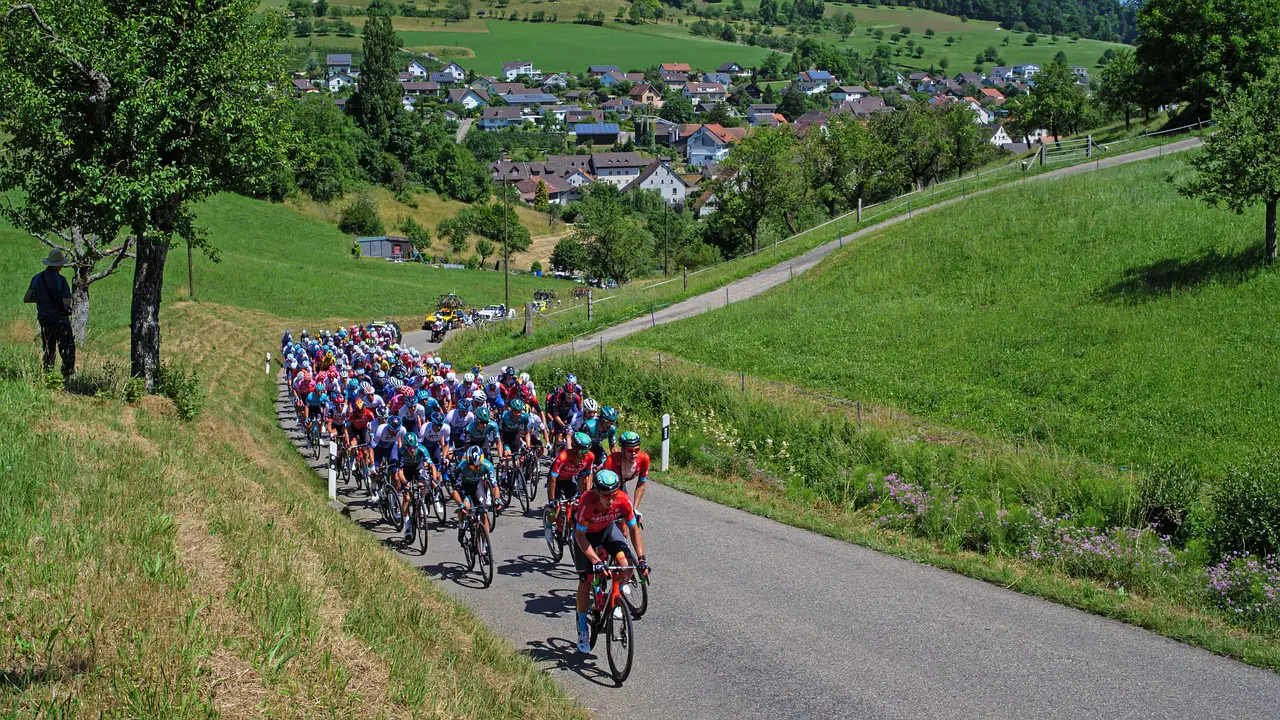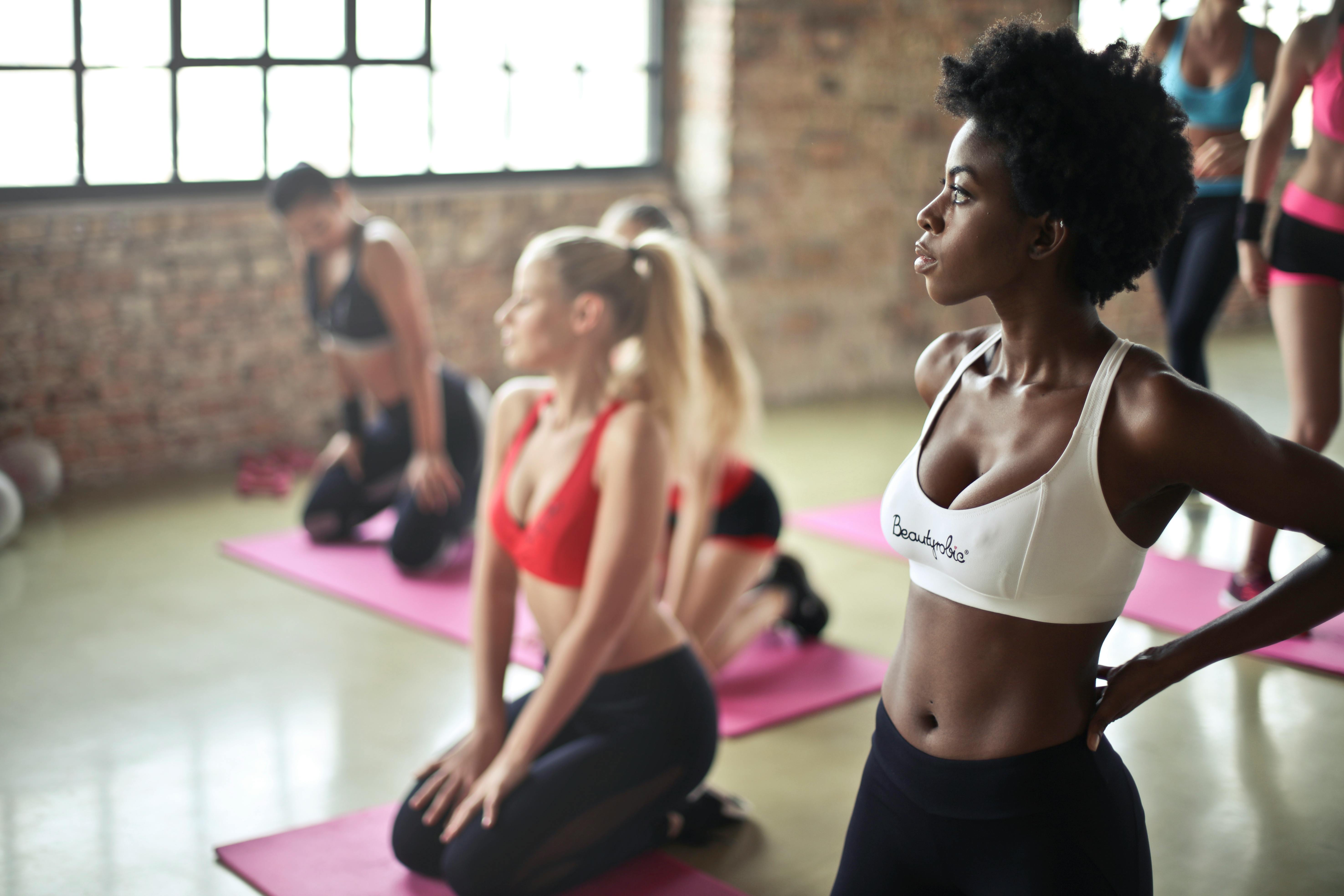What To Wear To A Cycling Class

Are you thinking about taking a cycling class, but don’t know what to wear? While the actual clothing items you choose may depend on the type of cycling class you plan to take, there are some general guidelines you should follow. This article will discuss what to wear to a cycling class and provide some tips for finding the right pieces that will keep you comfortable and looking your best.The best way to dress for a cycling class is to wear comfortable, lightweight clothing that won’t restrict your movements. Choose items that are made of breathable fabrics so you don’t overheat during your workout. Avoid anything too loose or bulky that could get in the way while you ride. You’ll also want to wear supportive shoes with a good grip on the pedals. Opt for shorts or leggings with a tank top or t-shirt. You may also want to consider wearing a sports bra for extra support and moisture-wicking socks and gloves. Make sure to bring a water bottle, towel, and other accessories you might need during your class.
Cycling Clothing Basics
When it comes to cycling clothing, there are a few basics that riders should keep in mind. The right cycling clothing can make a big difference in your performance and overall comfort. Breathable, lightweight fabrics are essential for staying cool and dry during long rides. It is important to find pieces that fit properly so you can move freely and safely. Cycling shorts or bibs are an essential piece of cycling apparel as they provide padding for comfort on longer rides and protect you from chafing. Cycling jerseys provide breathability, visibility, and pockets for storage of essentials. Jackets, base layers, gloves, socks, and shoe covers can also be helpful depending on the weather conditions. Finally, it is important to pick cycling clothing that matches your style so you look good while riding!
When choosing the right cycling clothing, it is important to consider the fabric used as well as the fit. Fabric should be lightweight and breathable to help keep you cool during your ride. Look for fabrics with features such as moisture-wicking technology and UPF protection from the sun’s rays. For fit, make sure that the clothes are not too tight or too loose as this can cause discomfort or hinder performance. Also think about what type of riding you will be doing; if you plan on doing off-road biking then look for more rugged pieces that will hold up against rougher terrain.
Ultimately, the right cycling clothing is essential for staying safe and comfortable while riding your bike. With so many options available today it can be overwhelming to decide which pieces are best suited for your needs but don’t forget to take into consideration fabric type, fit, weather protection and style when making your decision!
The Best Cycling Shoes
Cycling shoes are an essential piece of equipment for any cyclist. Not only do they provide support and protection to the feet while pedaling, but they also enable a more efficient transfer of power from the foot to the pedals. With so many different types of cycling shoes available, it can be difficult to know which ones are best for your needs. In this article, we’ll discuss what makes a great cycling shoe and provide some tips on choosing the perfect pair.
When it comes to cycling shoes, fit is key. Shoes that are too tight may cause discomfort and can lead to blisters or calluses, while too-loose shoes could cause your feet to slide around in the shoe and reduce efficiency when pedaling. To ensure a proper fit, make sure you try on several sizes and widths before making a purchase.
Another important consideration when selecting cycling shoes is their intended use. Road cycling shoes typically have stiffer soles than mountain bike or commuter shoes, as this helps to transfer power more efficiently while pedaling on flat roads or uphill climbs. Meanwhile, off-road cycling shoes typically have more flexible soles, as this helps with traction and stability while riding on trails or other rough terrain. Once you know what type of riding you’ll be doing most often, you can narrow down your search accordingly.
The type of closure system used in a cycling shoe is also important. Velcro straps are popular for their ease of use and adjustability, but some riders may prefer the security of traditional laces instead. Additionally, some models offer Boa dials or ratcheting buckle systems that allow for quick adjustments to fit as needed during rides.
Finally, look for features like reinforced toes and heels that help protect your feet from impacts with rocks or roots while riding off-road; waterproofing technologies that keep your feet dry in wet weather; ventilated uppers that allow air flow; and reflective details that help keep you visible during night rides.
By considering all these factors when selecting a pair of cycling shoes, you’ll be sure to find the perfect pair for your needs – whether it’s racing on flat roads or tackling technical trails!
Must-Have Accessories for Cycling Class
Cycling classes are an excellent way to get fit and stay healthy. It is important to make sure you have the right accessories to maximize your workout and safety. Here are some must-have accessories for cycling classes:
1. A good quality bike helmet – A good quality bike helmet is essential for any cyclist, whether you’re just starting out or you’re an experienced rider. Investing in a good quality helmet will help protect your head from any potential impact and provide much-needed support while riding.
2. Cycling shoes – Cycling shoes are designed to provide maximum grip and stability while pedaling, which helps to improve your performance during cycling class. Look for a shoe that is specifically designed for cycling, as it will provide the best support and comfort needed while riding.
3. Water bottle – Hydration is key when it comes to any workout, so make sure you have a water bottle on hand at all times during your cycling class. This will ensure that you stay hydrated throughout the class and help keep your energy levels up so that you can give it your all!
4. Pedals – Pedals help to provide stability when riding the bike, so investing in a pair of good quality pedals is important if you want to get the most out of your cycling class experience. Look for pedals that have adjustable tension settings so that you can customize them according to your needs.
5. Towel – A towel is essential for wiping away sweat during and after a workout session, so make sure you bring one along with you to every cycling class! A towel will also come in handy if there’s an unexpected rain shower during the class, as it can be used as a makeshift cape or umbrella until the rain passes over!
What to Wear on Your Upper Body
When deciding what to wear on your upper body, the most important thing is comfort. Layering your clothing is a great way to ensure that you can adjust to different temperatures and environments. A good place to start is with a base layer such as a t-shirt or tank top. This will keep you warm and comfortable while still allowing your skin to breathe and regulate its temperature. On top of the base layer, you can add a long sleeve shirt or sweater for extra warmth. For even colder climates, opt for an insulated jacket or coat that will protect you from the elements. In addition, consider adding accessories such as scarves or hats for added style and warmth. Finally, don’t forget about layering jewelry as well!
No matter what you choose, always make sure that the fabrics are breathable so that your body can regulate its temperature properly. Consider investing in pieces made of wool, cotton, or other natural materials that will keep you comfortable all day long. The key is to find items that fit your style and climate without sacrificing comfort. With the right combination of clothing pieces and accessories, you’ll be able to create stylish yet practical looks no matter where you go!

What to Wear on Your Lower Body
When it comes to dressing your lower body, there are many different options available. Pants, jeans, shorts, skirts, and leggings are just some of the garments that can be worn. Depending on the occasion, one of these items may be more appropriate than others. For example, jeans and a T-shirt are a classic look suitable for casual outings, while a dress or skirt may be more appropriate for a formal event.
When selecting pants or jeans, fit is key. Make sure the length is correct for your height and that the waistband fits comfortably without being too tight or loose. Color is also important—darker colors tend to look more polished and professional, while lighter colors can be more playful and casual.
Shorts are a great choice for warmer weather as they are lightweight and breathable. They come in a variety of styles such as bermuda shorts and jean shorts which can be dressed up with heels or kept casual with sneakers.
Skirts can also be dressed up or down depending on the occasion. A pencil skirt is perfect for work or formal events while an A-line skirt looks great with flats or sandals for a casual outing.
Finally, leggings offer an alternative to regular pants if you want something that is comfortable but still looks stylish. Pair them with an oversized sweater or tunic top for a chic yet cozy look.
No matter what you choose to wear on your lower body, make sure it fits properly and is comfortable enough to wear all day long!
Do You Need a Helmet and Gloves?
When it comes to safety on a bike, helmet and gloves are two essential pieces of gear. A bike helmet is designed to protect your head from serious injury in the event of an accident. It is also important to wear gloves to protect your hands from the elements and from scrapes or cuts if you take a tumble.
Helmets come in a variety of styles and sizes, so it’s important to make sure you get one that fits properly. When trying on helmets, make sure that the straps fit snugly under your chin and that the helmet itself is comfortable on your head.
Gloves should be lightweight and breathable but still provide enough protection for your hands. Look for gloves with padding in the palms to help absorb shock in the event of an accident, as well as extra grip on the palms to help you stay in control. Fingerless gloves are another option for those who want more dexterity while riding.
Whether you’re a casual rider or a hardcore cyclist, having a helmet and gloves is essential for safe riding. Make sure to invest in good quality pieces that fit properly so you can ride with confidence!
What Should I Wear to a Cycling Class as a Substitute Teacher?
Choosing the right outfit for a cycling class as a substitute teacher is essential for comfort and professionalism. Opt for moisture-wicking fabrics and form-fitting attire that allows for movement. Remember these tips for substitute teacher attire to ensure you look put together while staying active during the session.
Biking Apparel that Improves Performance
Biking apparel is an important factor in improving performance. It helps keep the cyclist comfortable and dry during long rides, while also protecting them from the elements. Wearing the right clothing can make a big difference in terms of speed, comfort, and safety.
The best biking apparel should be lightweight and breathable. This helps keep the cyclist cool while riding, as well as reducing fatigue. Look for fabrics that are designed to wick away moisture, such as synthetic fabrics or merino wool. Avoid cotton, as it tends to hold onto moisture and can cause chafing.
Another important factor is fit. Make sure that the clothing fits snugly without being too tight or restrictive. Baggy clothing can slow you down by catching wind and creating drag, so look for close-fitting designs that won’t get in the way of your ride.
When it comes to selecting biking apparel for performance, look for features such as reflective panels or bright colors that will help you stand out on the road. These features will help keep you safe by making you more visible to other cyclists and drivers.
Finally, make sure that your biking apparel is designed specifically for cycling activities. Certain items may be marketed as “multi-use” but may not be suitable for intense physical activity such as cycling. Look for items with features like extra padding or adjustable straps that provide additional support during long rides.
Overall, finding the right cycling apparel can make a big difference in your performance on the bike. Look for lightweight materials that wick away moisture and fit well without being too restrictive or baggy. Features like reflective panels or bright colors can help keep you safe on the roads, while specialized cycling apparel provides additional support during longer rides.

Conclusion
When you go to a cycling class, it is important to think about what to wear. You want to be comfortable and safe so you can enjoy the class and get the most out of it. Make sure you pick clothes that are breathable and flexible, such as moisture-wicking materials and stretchy fabrics. It’s also important to wear clothes that fit correctly, so they don’t get in the way of your movements. Additionally, make sure that your shoes have enough support and cushioning for a comfortable ride. Finally, be sure to bring a few extra layers in case the temperature drops during the class. With all these tips in mind, you should be ready for any cycling class!
